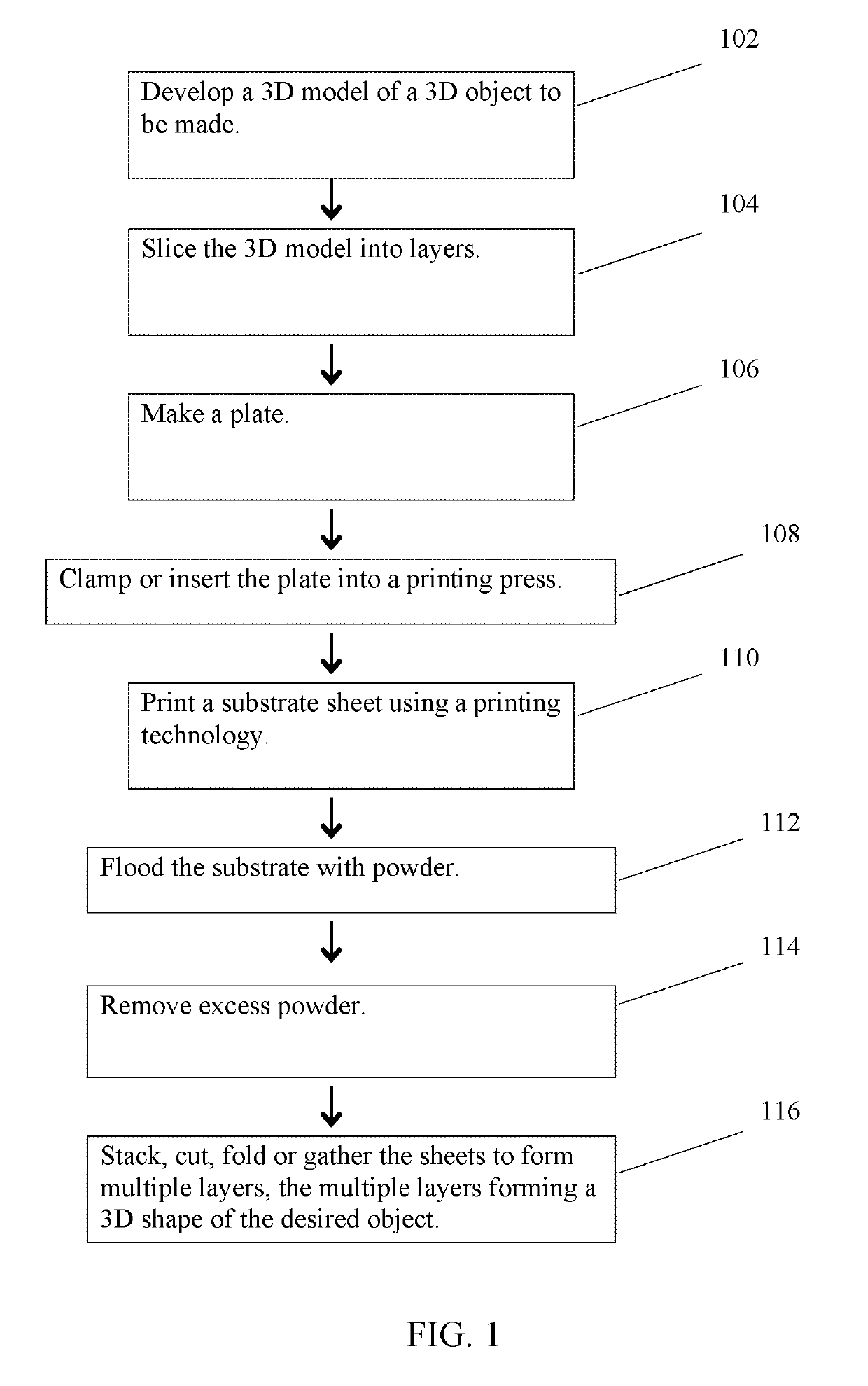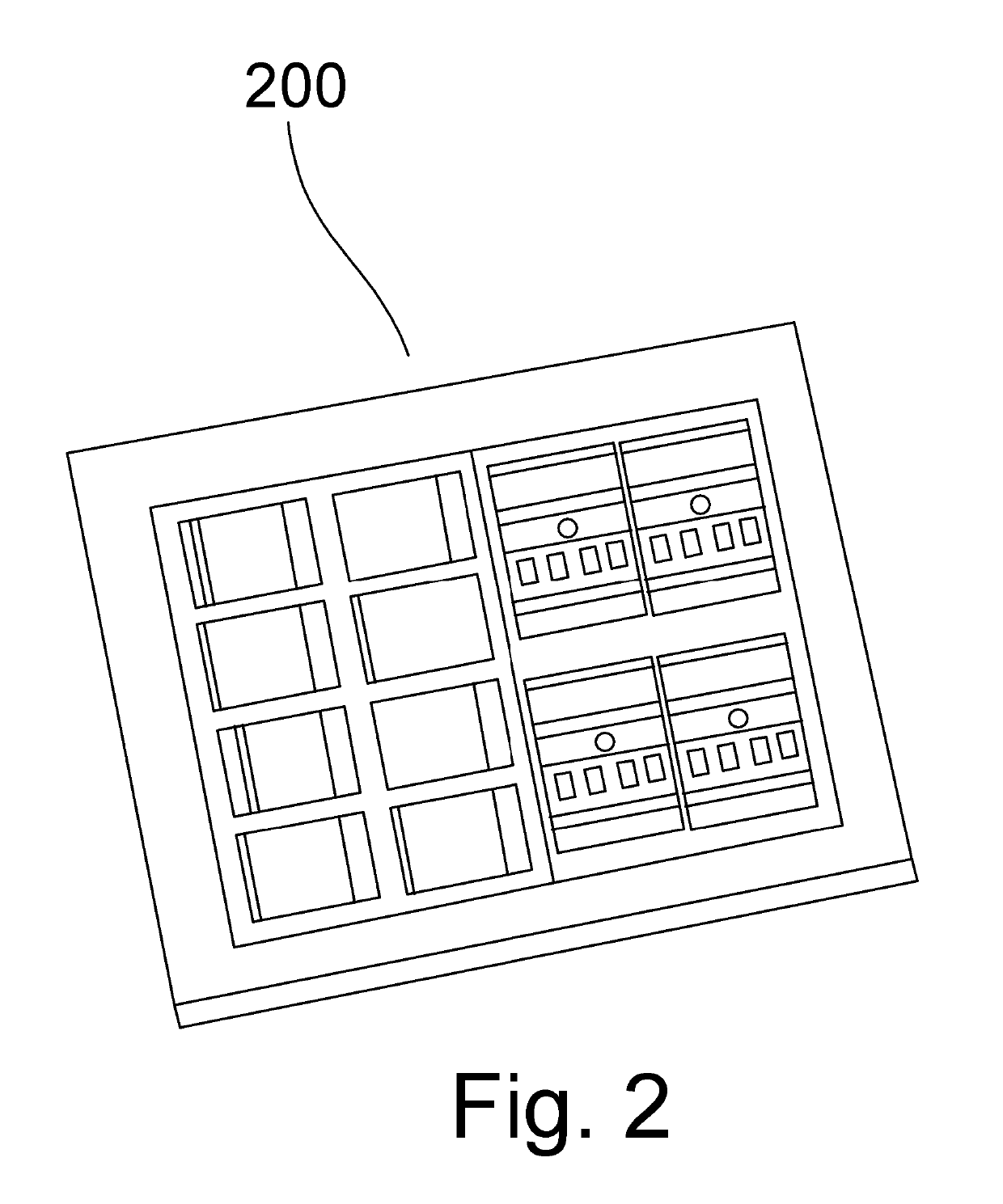Additive Manufacturing Method and Apparatus
a manufacturing method and additive technology, applied in the field of three-dimensional fabrication, can solve the problems of inability to work correctly, lack of a number of problems and limitations, and high cost of injection molding tools,
- Summary
- Abstract
- Description
- Claims
- Application Information
AI Technical Summary
Benefits of technology
Problems solved by technology
Method used
Image
Examples
Embodiment Construction
[0022]Using a book example the process of this invention is described as follows. FIG. 1 is a flowchart illustrating the process for additive manufacturing of a 3D object. Flexography, or gravure may be used since it can easily print with aqueous based inks which are particularly suited for the CBAM process, and is traditionally used in product packaging printing to make large areas of solid color. However, oil based inks for example as used in conventional lithography can also be used. In addition a conventional lithography press can be modified so that ink solution is transferred from the plate to the substrate or the ink solution is transferred from the blanket to the substrate. The solution may have an anti-evaporant including glycols and pyrrolidones. A 3D model of the object to be made is developed (Step 102). The 3D model is sliced into layers as described in the earlier patents (Step 104). From this, a plate, or plates are made, depending on the size of the object and the si...
PUM
| Property | Measurement | Unit |
|---|---|---|
| photosensitive | aaaaa | aaaaa |
| counter-pressure | aaaaa | aaaaa |
| compressive | aaaaa | aaaaa |
Abstract
Description
Claims
Application Information
 Login to View More
Login to View More - R&D
- Intellectual Property
- Life Sciences
- Materials
- Tech Scout
- Unparalleled Data Quality
- Higher Quality Content
- 60% Fewer Hallucinations
Browse by: Latest US Patents, China's latest patents, Technical Efficacy Thesaurus, Application Domain, Technology Topic, Popular Technical Reports.
© 2025 PatSnap. All rights reserved.Legal|Privacy policy|Modern Slavery Act Transparency Statement|Sitemap|About US| Contact US: help@patsnap.com



